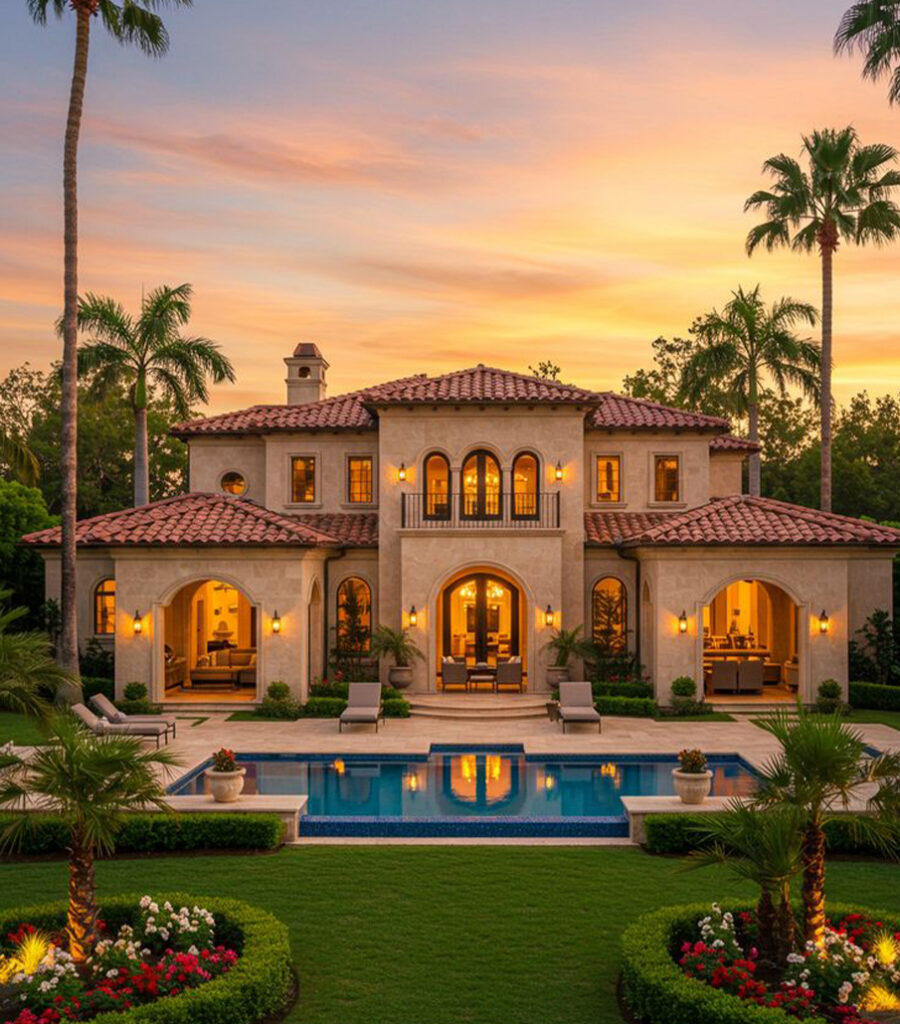Tijara Fort
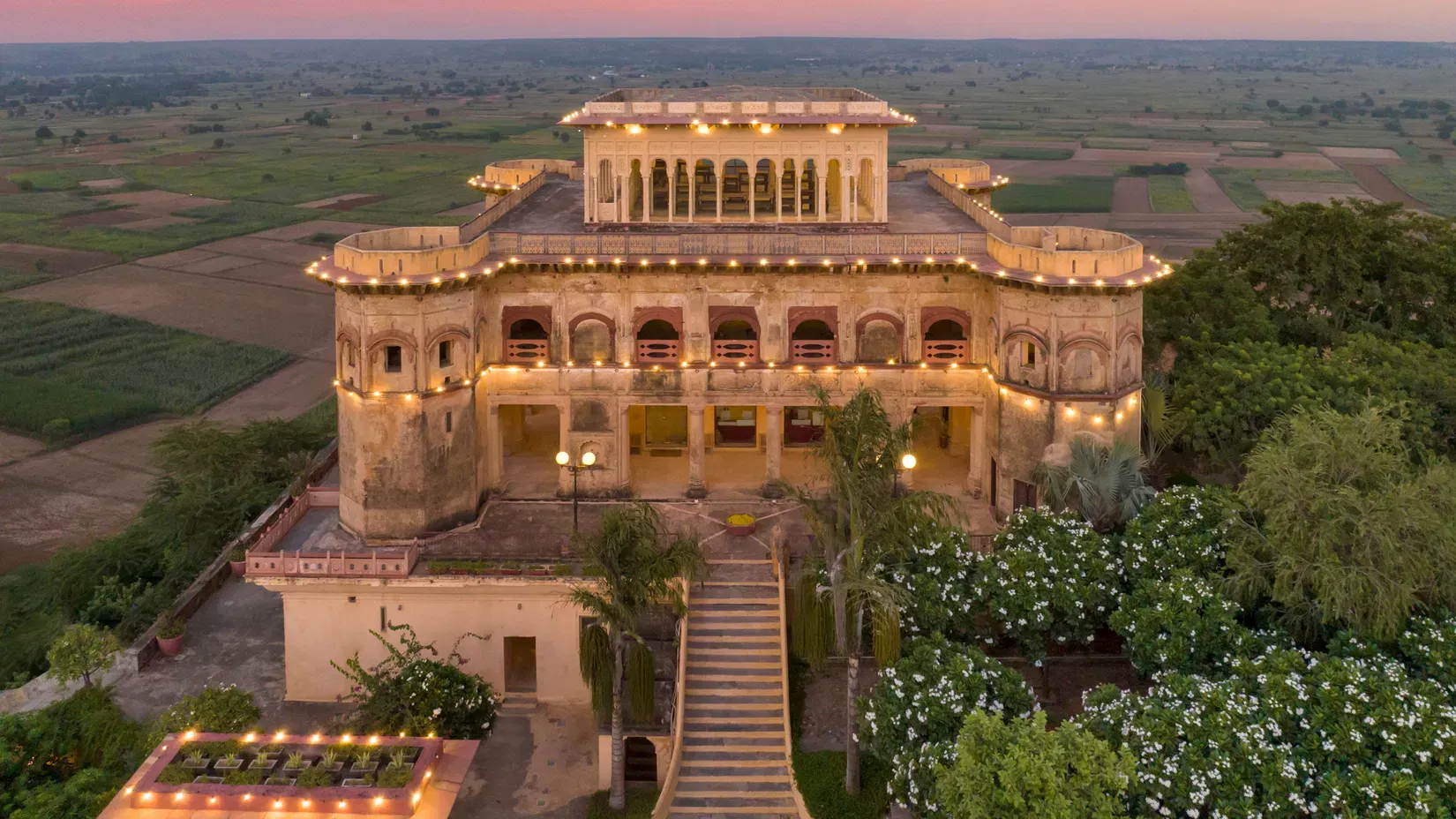
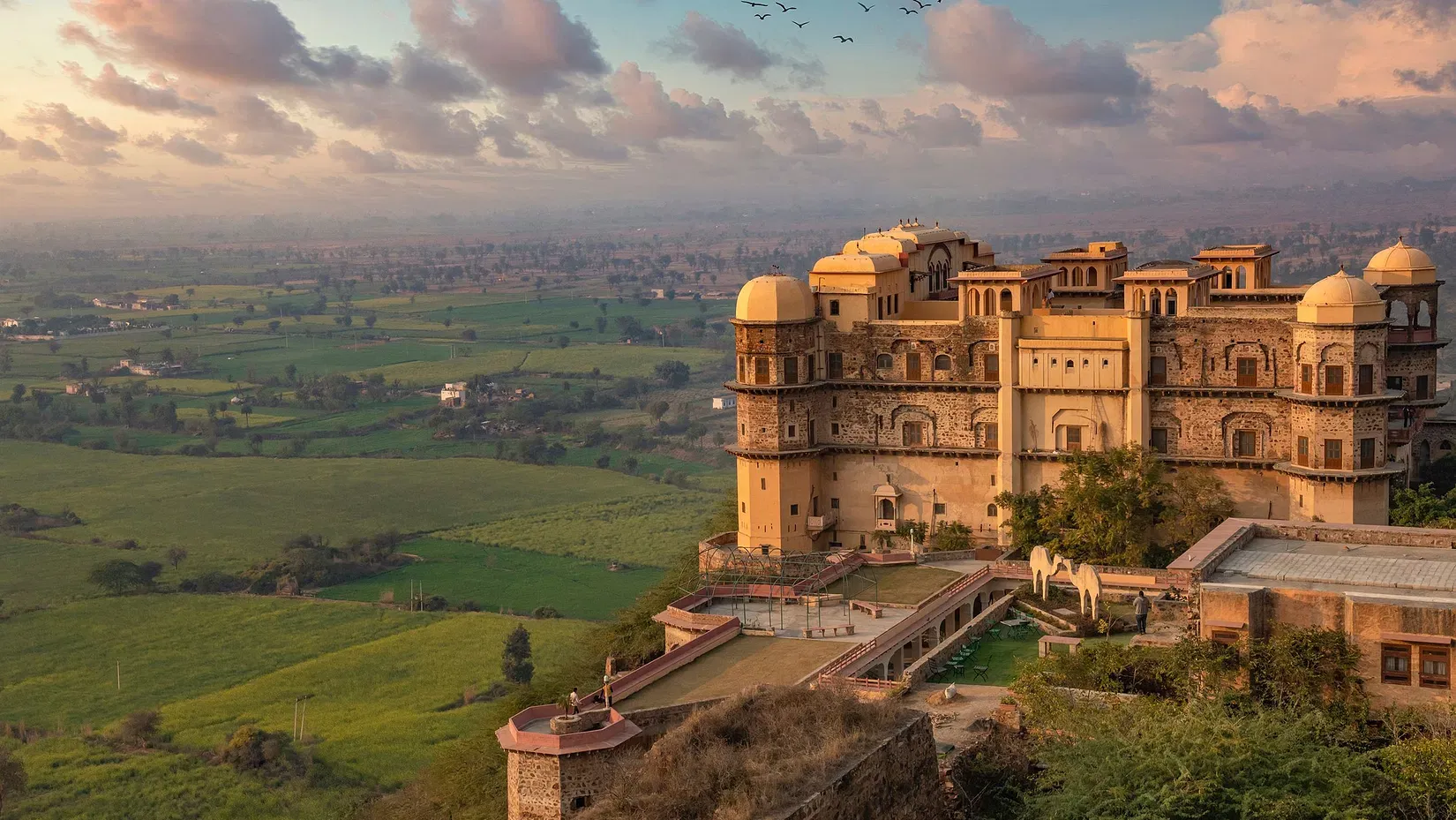
Tijara Fort
Tijara Fort, officially the Tijara Fort-Palace, is far more than a historical ruin; it stands as a magnificent testament to architectural vision, royal ambition, and meticulous restoration in the Alwar district of Rajasthan, India. This historic structure, an imposing silhouette against the backdrop of the Aravalli hills, has been painstakingly transformed into a heritage non-hotel, blending its 19th-century incomplete grandeur with modern luxury.
Read More
The fort not only anchors the cultural identity of Tijara but also serves as a crucial point of interest influencing the burgeoning demand for lifestyle and investment opportunities in the surrounding region, notably the premium Tijara farmlands and residential Plots in Tijara.
The resurgence of the fort has positioned Tijara Alwar on the map as a key weekend destination, which, coupled with its strategic location near the National Capital Region (NCR), has created a unique real estate synergy that makes Tijara Rajasthan a focal point for investment in North India.
The Unfinished Dream: History and Architecture of Tijara Fort
The story of the Tijara Fort is one of royal aspirations tragically cut short, a void that centuries later has been filled by dedicated preservationists.
A.) Royal Origins and Incomplete Vision
The foundation of the fort was laid by Maharaja Balwant Singh of Alwar in the mid-19th century (c. 1835-1845). He envisioned a grand, strategically important fortress that would showcase the power and artistic tastes of the Alwar state. However, the Maharaja’s untimely death in 1845 left the structure incomplete. For over a century, the monumental stone shell stood vacant, a silent and formidable monument to an unfulfilled royal dream.
Read More
The architecture of the Tijara Fort is a remarkable fusion of indigenous Rajput style and subtle Afghan influences, characterized by imposing ramparts, commanding watchtowers, and large, open-air courtyards designed for the royal court. The structure, originally intended to be a robust military and residential complex, incorporates local red sandstone, which gives it a powerful, earthy hue that contrasts beautifully with the arid landscape of Tijara India.
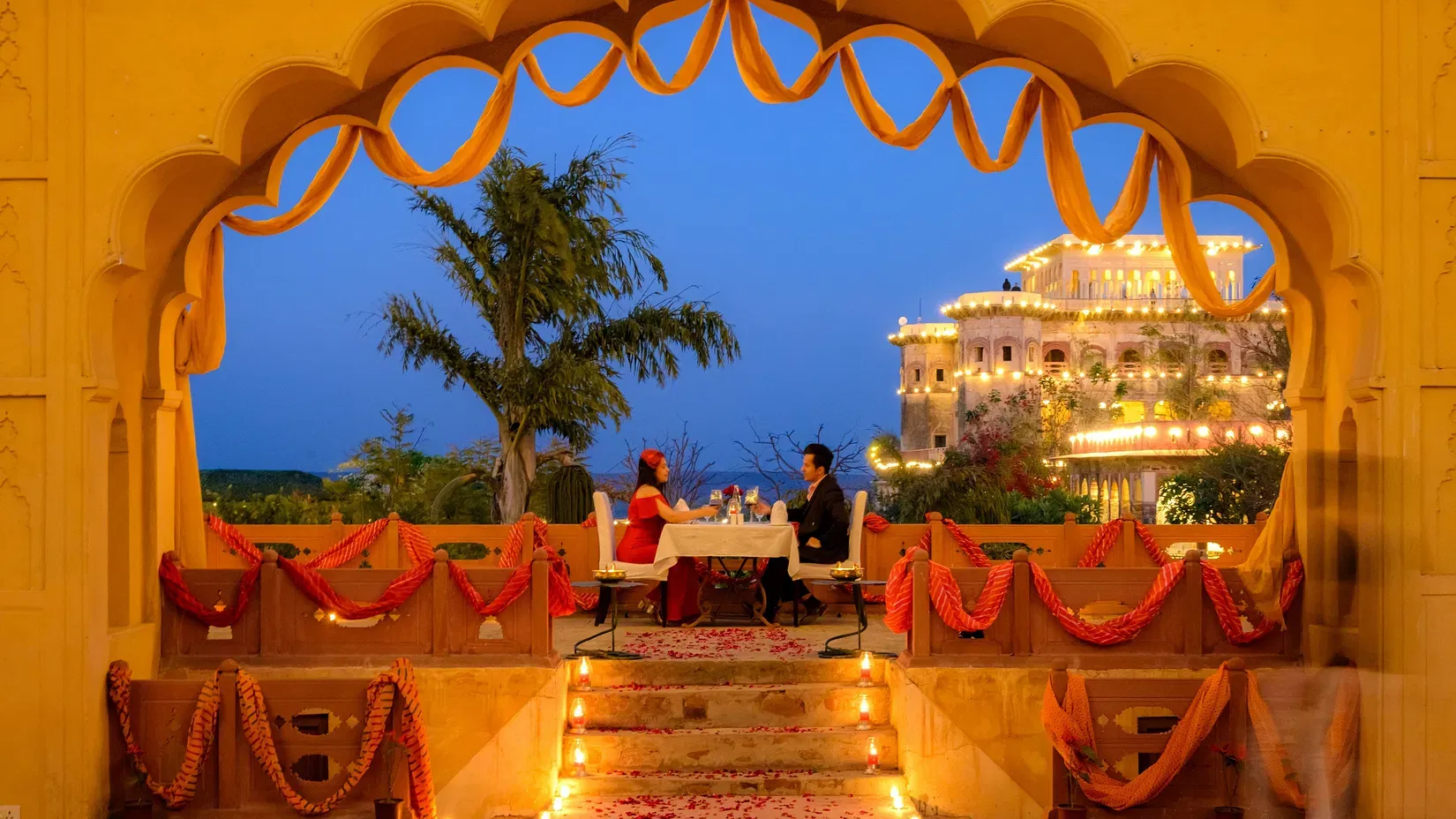
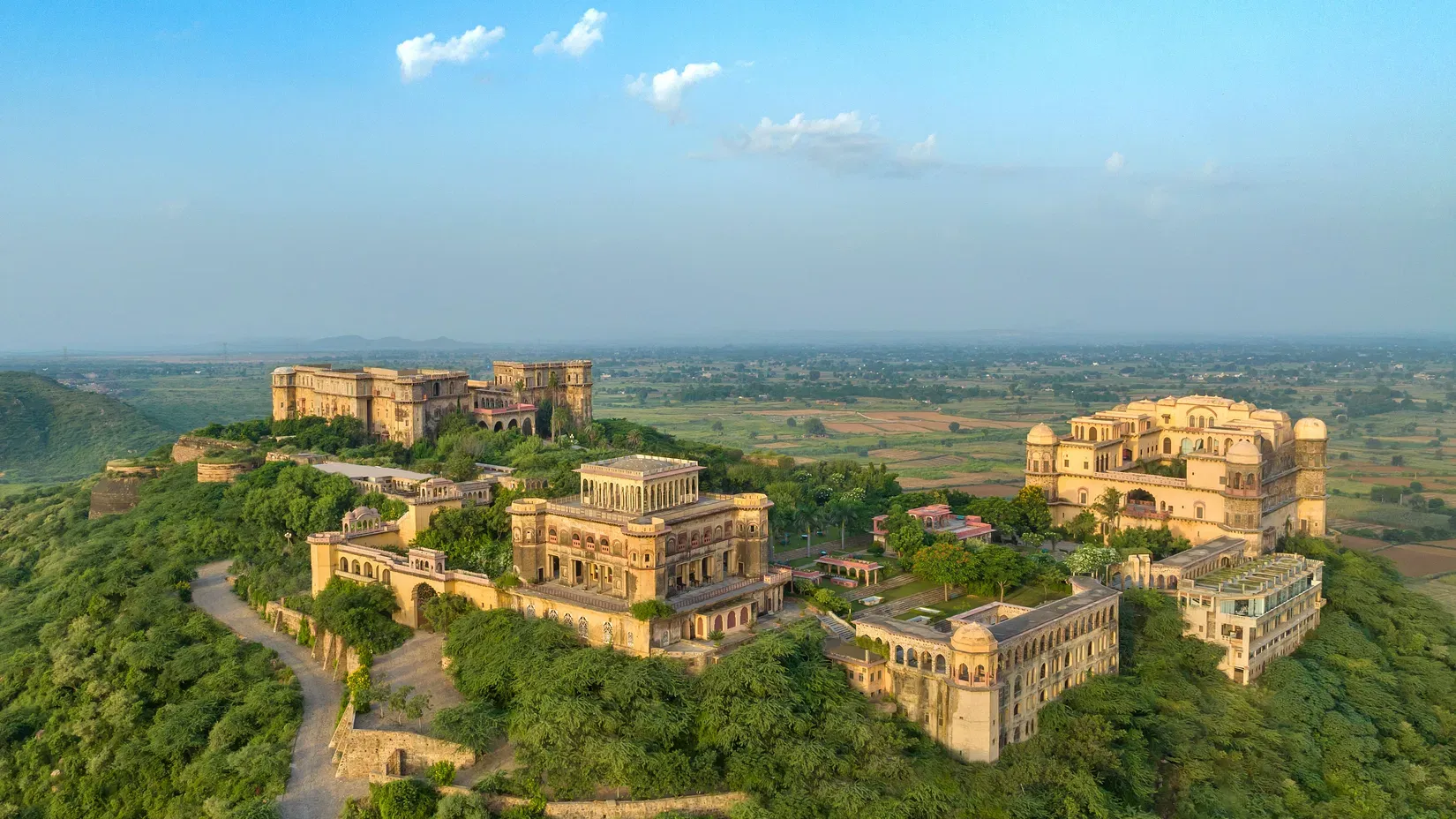
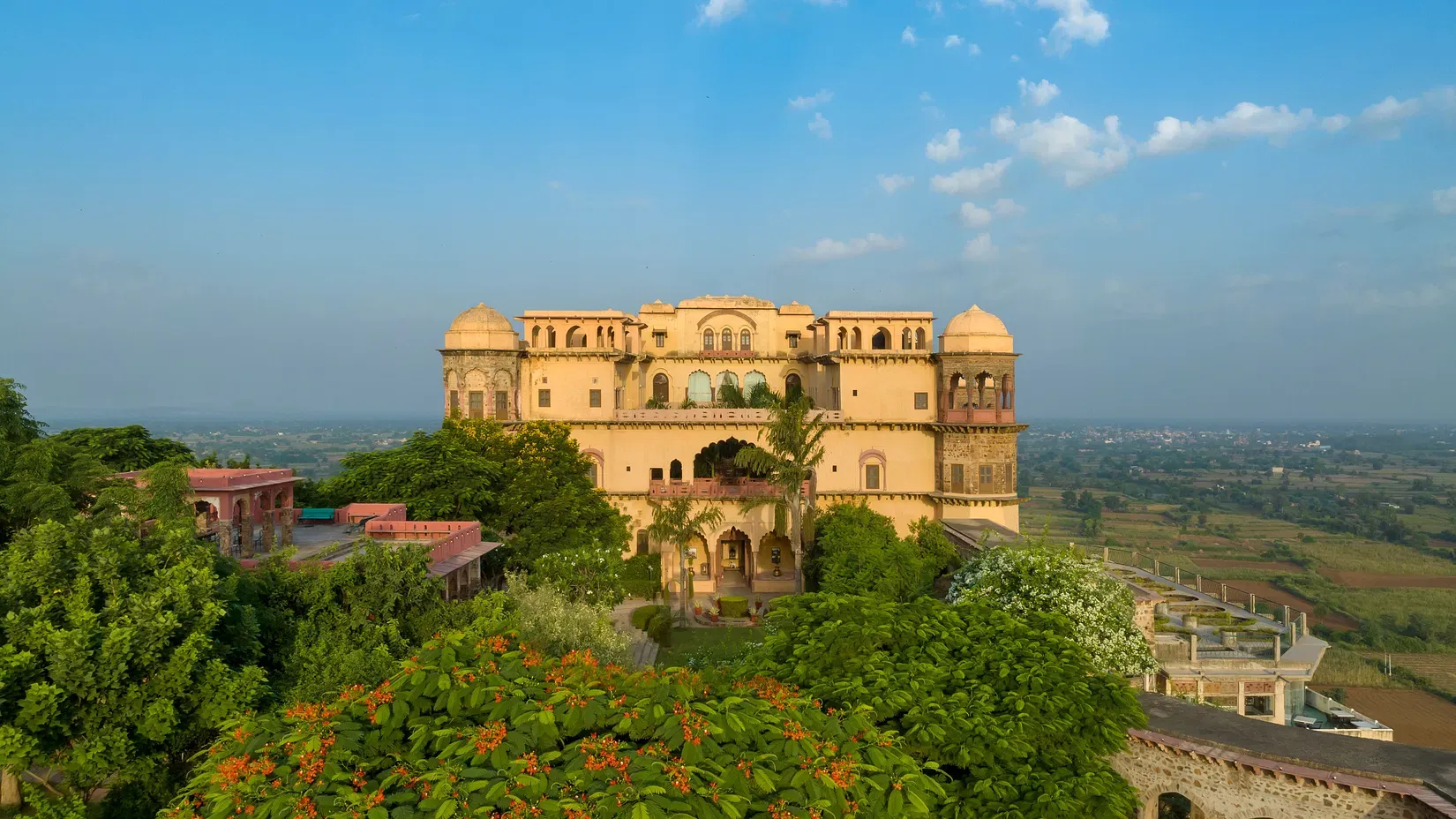
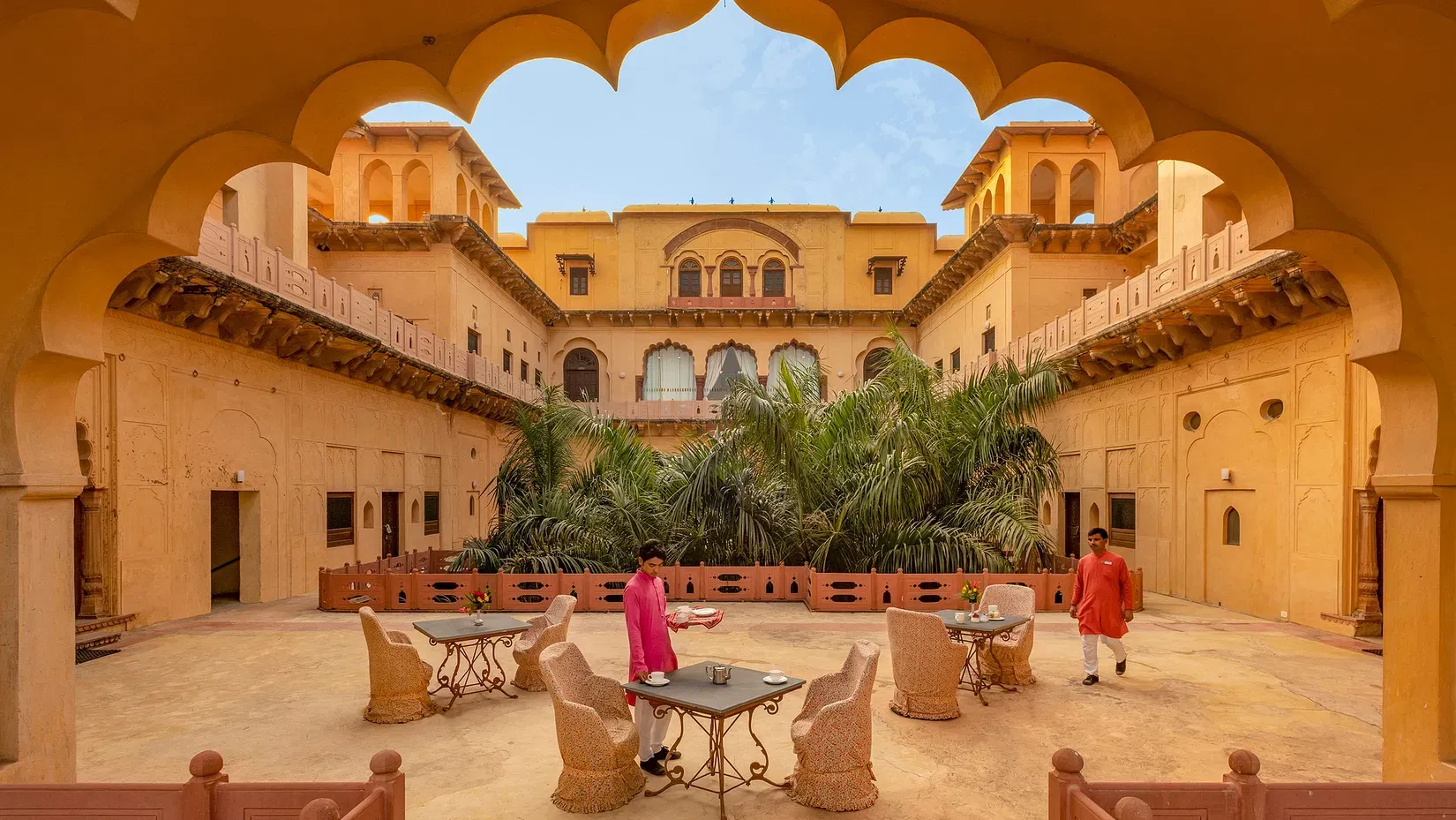
B.) The Grand Layout: Mardana and Rani Mahals
The fort is architecturally divided into two primary sections, built on the two levels of the hill:
- The Mardana Mahal (Men's Palace): This section features high ceilings, wide corridors, and viewing points designed for military and administrative purposes. It often includes the Diwan-e-Aam (Hall of Public Audience) and spaces dedicated to the male members of the royal family.
Read More
- The Rani Mahal (Queen's Palace): Designed with greater sensitivity to privacy and aesthetics, the Rani Mahal is noted for its intricate stone jharokhas (balconies) and delicate craftsmanship. These sections offered seclusion and panoramic views of the expansive lands below, including the fertile Tijara farmlands stretching out to the horizon.
The restoration efforts have maintained the integrity of these historical divisions, transforming them into luxurious, themed suites that allow guests to literally live within the historical fabric of Tijara Alwar.
The Modern Transformation: Heritage and Tourism
The contemporary significance of Tijara Fort lies in its successful conversion into a heritage property. This preservation model has injected new life and economic relevance into the historical structure and the town of Tijara.
A.) A Non-Hotel Heritage Destination
The fort was acquired and meticulously restored, transforming it into a luxurious non-hotel property. This restoration was a mammoth task that focused on conserving the original architectural aesthetics while integrating modern amenities. The fort’s transformation has made it a celebrated example of adaptive reuse, showcasing how ancient heritage in Rajasthan can be sustainably preserved.
Read More
It offers a premium, immersive historical experience, drawing high-end clientele from Delhi, Gurugram, and the wider NCR region seeking a sophisticated retreat close to the city.
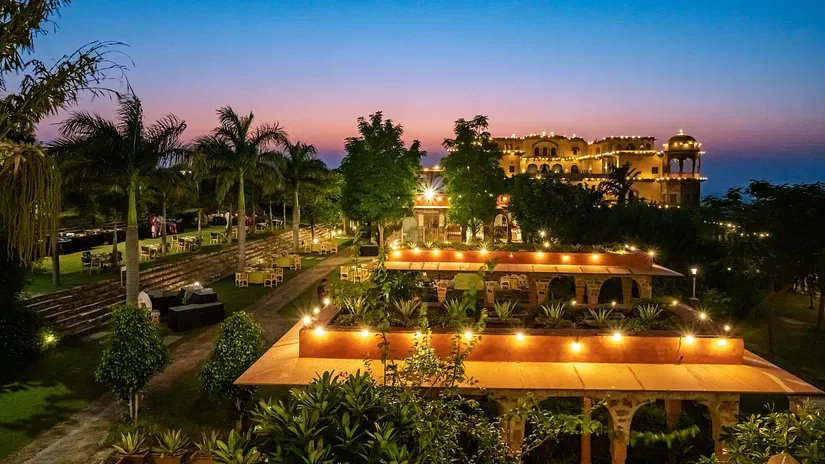
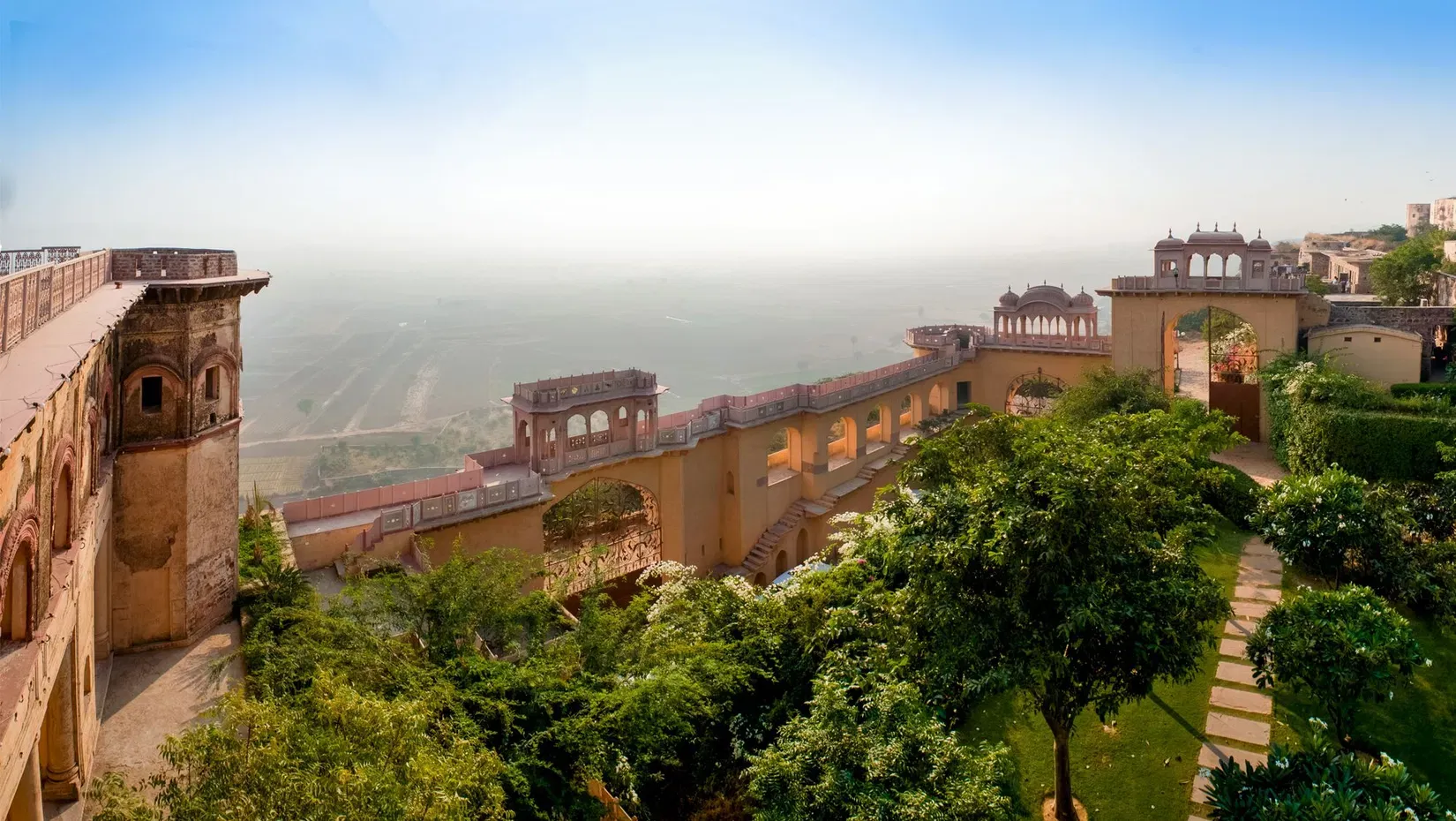
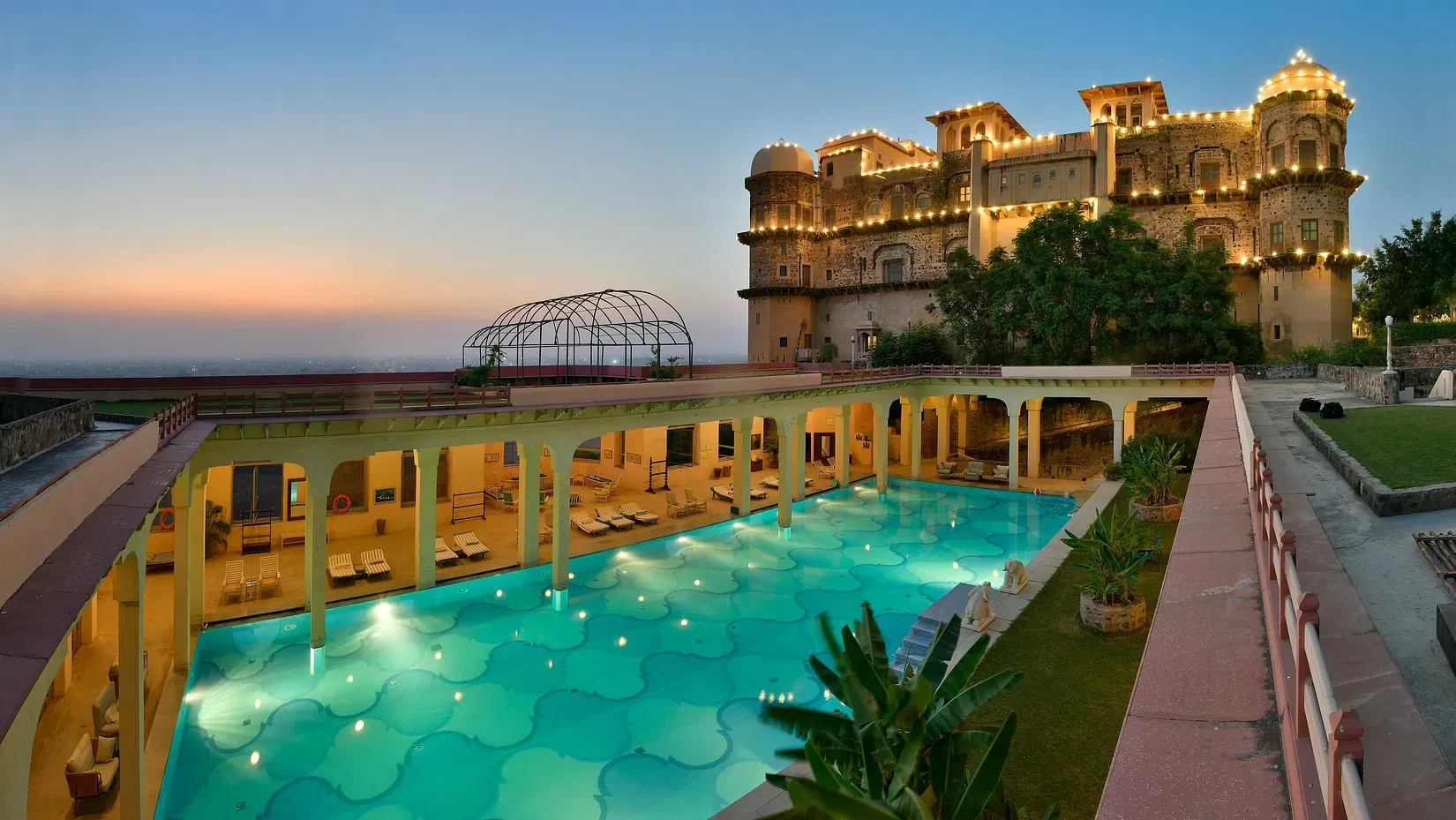

B.) Impact on Local Economy and Connectivity
The presence of the beautifully restored Tijara Fort-Palace acts as a powerful tourism engine:
- Job Creation: It directly and indirectly supports local employment in hospitality, maintenance, and ancillary services in Tijara Rajasthan.
Read More
- Infrastructure Improvement: The need to cater to high-profile tourists encourages the local administration and private investors to improve road connectivity and local amenities, which in turn boosts the value proposition of all land holdings, including farmlands in Tijara.
- Synergy with Spiritual Tourism: Its proximity to the revered Tijara Jain Temple creates a dual-attraction destination, where visitors can combine luxury accommodation with profound spiritual pilgrimage, further solidifying the town’s profile in Tijara India.
Tijara and Real Estate: The Fort's Indirect Influence
The prestige associated with the Tijara Fort-Palace has subtly yet significantly influenced the real estate dynamics in the surrounding region, driving demand for exclusive retreats and investment land. The stability and allure of the fort contribute directly to the premium associated with Tijara farmlands and residential plots.
A.) The Rise of Farmland as a Lifestyle Asset
The primary beneficiaries of Tijara’s rising profile are the investors targeting large land parcels for Farm houses in Tijara. The serene, historical, and accessible location makes Tijara Farmland highly attractive:
Read More
- Exclusive Retreats: Wealthy NCR residents are increasingly looking to Buy land in Tijara to develop bespoke, luxurious farmhouses. These properties capitalize on the tranquility and clean environment of Tijara Alwar, serving as private weekend escapes.
- Investment Security: Reputable developers are offering farmlands for sale in Tijara with proper approvals for development, ensuring that investors receive clear-title and legally secure properties. This addresses a major concern for investors venturing into land acquisition in India.
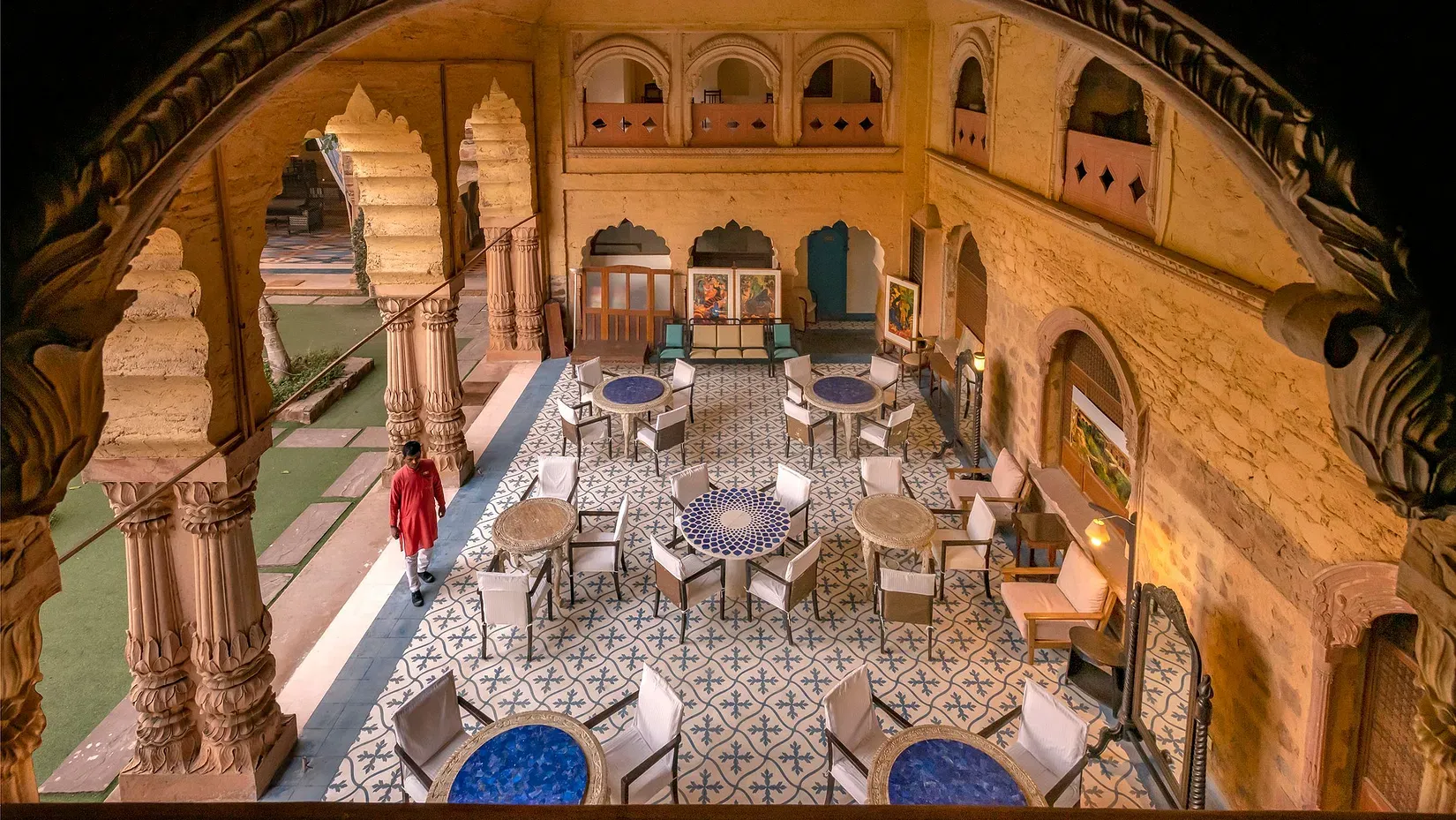
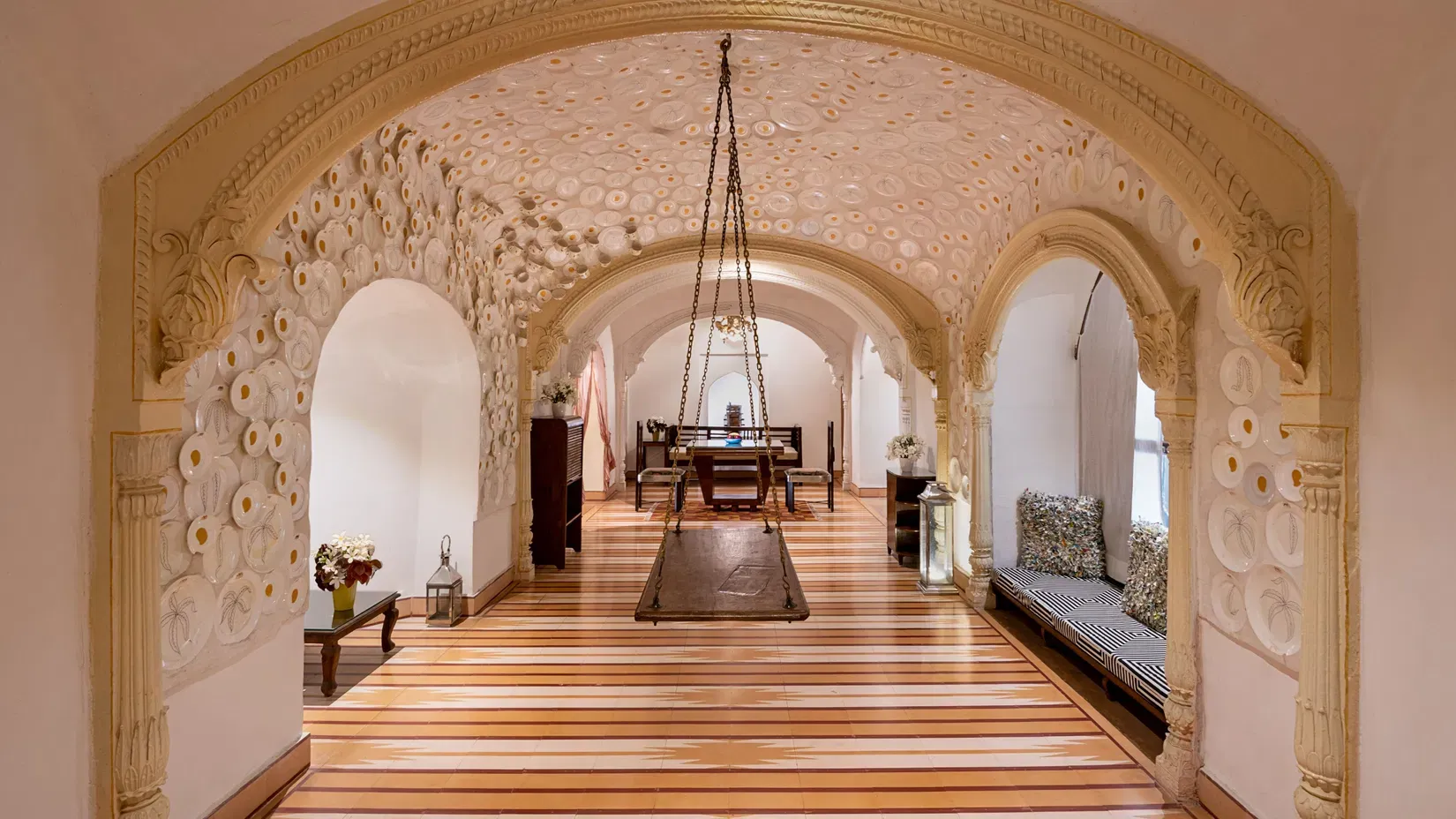
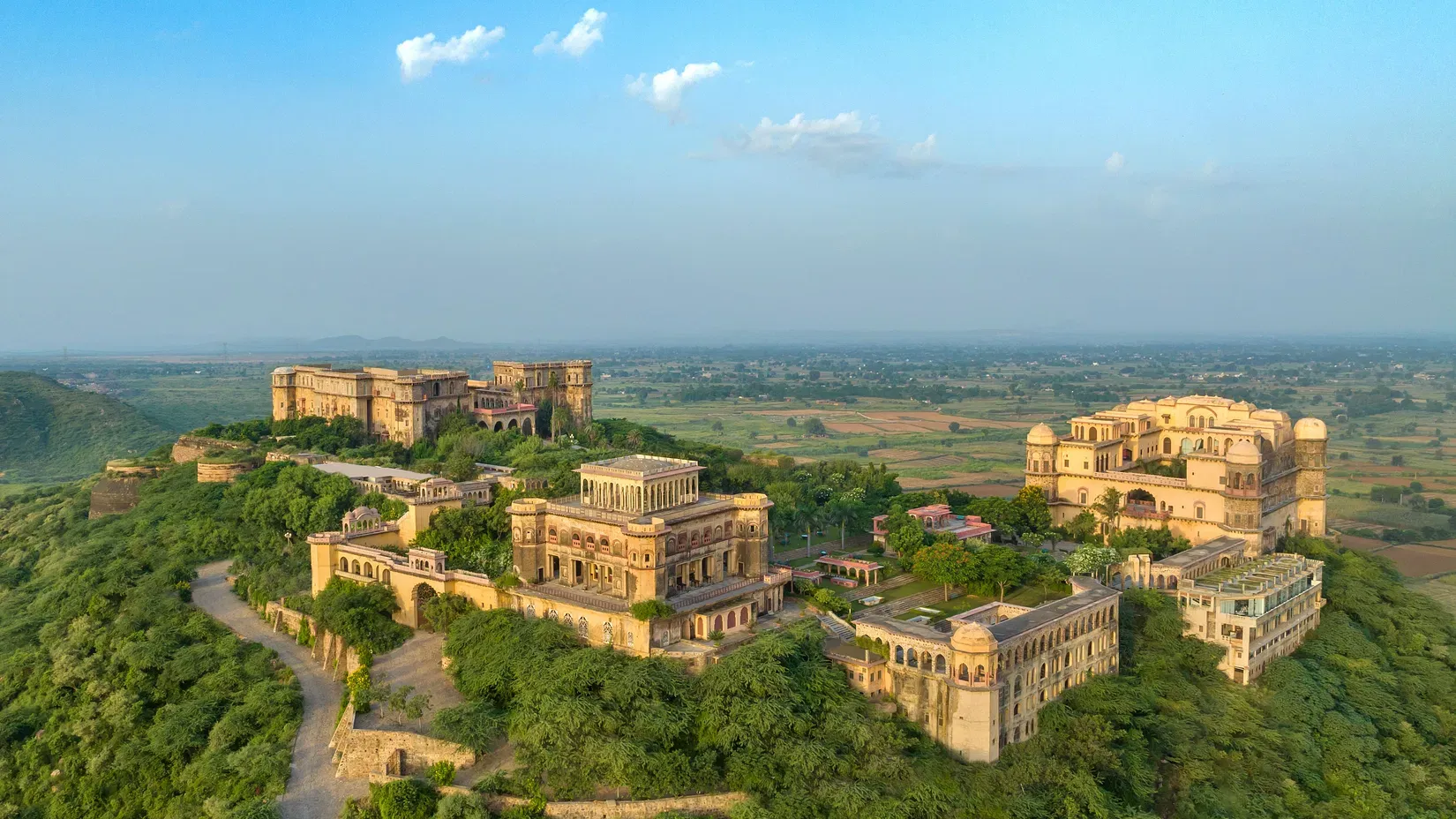

b.) Farmland Prices in Tijara: A Growing Metric
The farmlands prices in Tijara have experienced steady appreciation, driven by the fort’s influence and regional infrastructure projects like the Delhi-Mumbai Expressway. Prime parcels of Farmland in Tijara, especially those earmarked for gated Farm houses in Tijara and located near major connectivity points, command a premium. This upward trend highlights the region’s evolution from a purely agricultural belt to a valuable investment corridor.
c.) Demand for Plots in Tijara
Beyond the large tracts of Tijara farmlands, there is a noticeable rise in demand for smaller Plots in Tijara for residential and commercial purposes. This local development is fueled by the increased economic activity and infrastructure growth brought about by the fort and the neighboring industrial hubs of Bhiwadi and Neemrana.



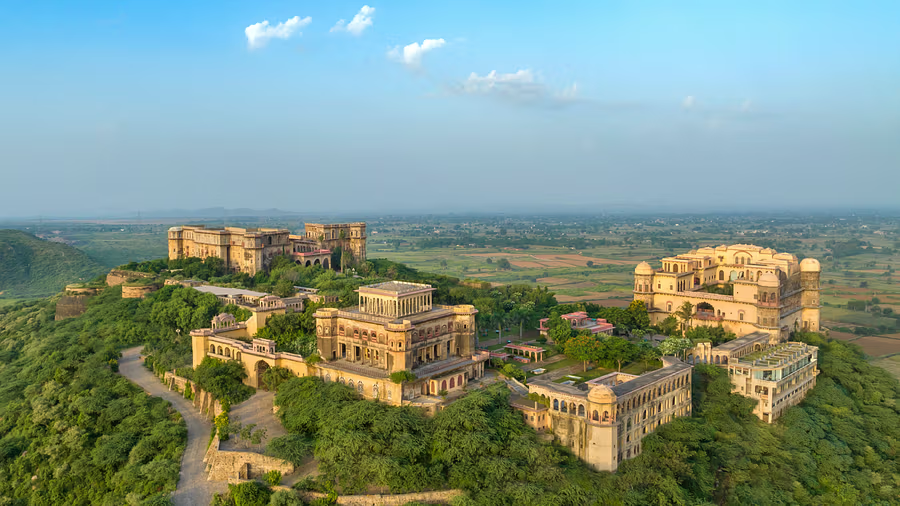
Conclusion: Tijara Fort – Heritage, Hospitality, and High Value
The Tijara Fort-Palace is a triumph of conservation, a place where the echoes of Maharaja Balwant Singh’s unfinished dream meet the demands of modern luxury travel. Its commanding presence in Tijara Alwar ensures that the town maintains a distinguished profile, elevating its desirability for both tourism and investment.
Read More
The proximity to the NCR and the established beauty of the fort create a perfect storm for real estate appreciation, particularly for those looking to Buy land in Tijara for premium Farm houses in Tijara development. The steady rise in farmlands prices in Tijara confirms that this location, anchored by its splendid fort, is one of the most promising and serene investment corridors in Rajasthan, India. The fort not only preserves history but actively generates value, making Tijara Farmland a wise acquisition for discerning investors today.

